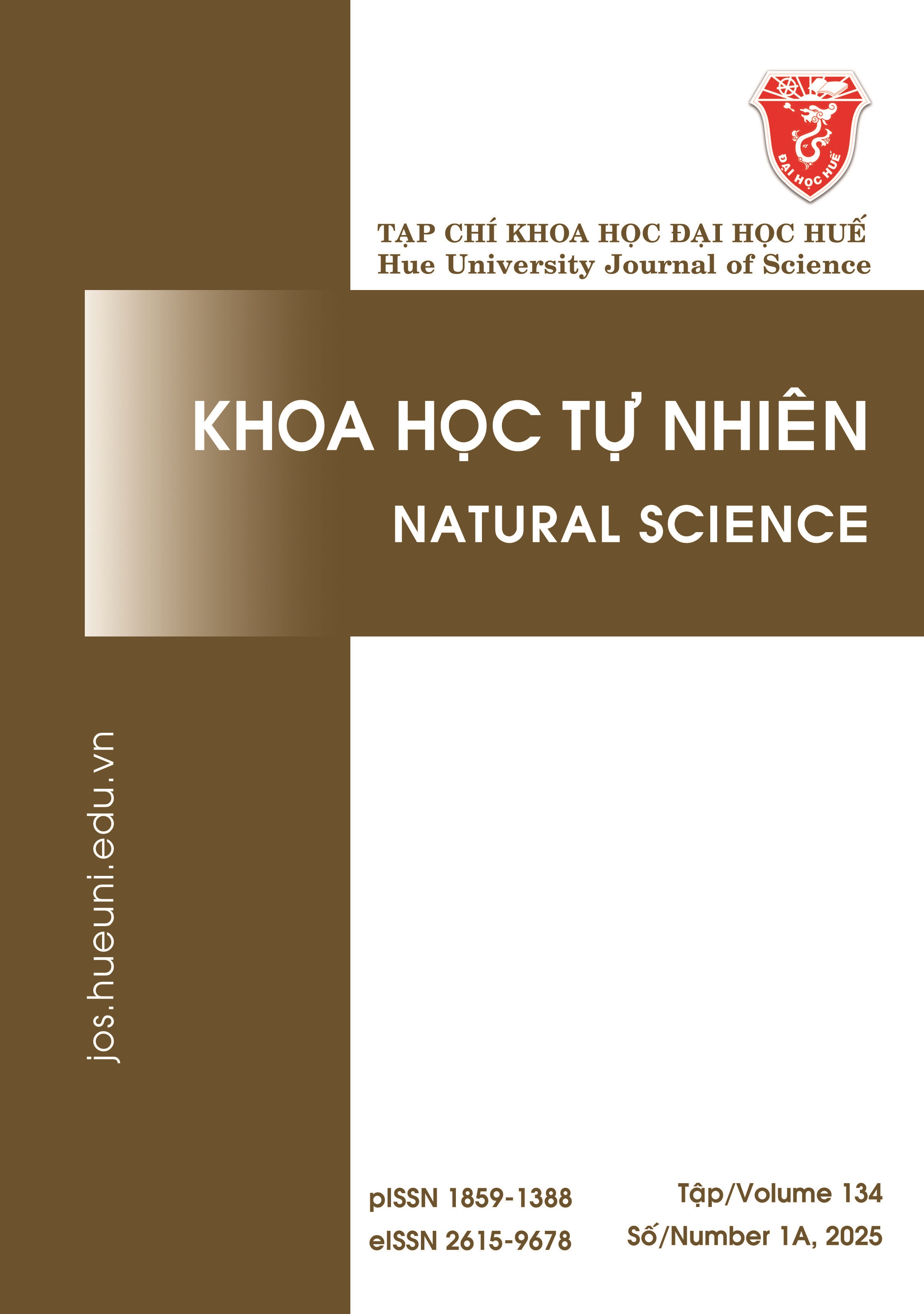Abstract
In this study, a ternary composite material TiO₂/g-C₃N₄/biochar (TCNBC), derived from reed stalks, was successfully synthesised by using a simple hydrolysis method. The study demonstrates that biochar has a significant impact on the structure and photocatalytic activity of the obtained composite. Biochar plays a crucial role in inhibiting crystal growth, increasing the specific surface area, reducing the band gap energy, and enhancing the visible light absorption capability of TiO₂. The TCNBC composite exhibits an average crystal size of 5.5 nm and a lower band gap energy of 0.62 eV, while its specific surface area (32.6 m²/g) is significantly higher than that of pure TiO₂ (33.7 nm, 3.02 eV, and 2.1 m²/g). The synthesised photocatalyst composite effectively catalysed the photodegradation of doxycycline (DC) from aqueous solutions. This composite exhibited approximately 7.48 times higher photocatalytic activity compared with pure TiO₂. The TCNBC composite synthesised with a TiOSO₄/g-C₃N₄/biochar mass ratio of 4/1.5/0.5 achieved the highest DC photodegradation efficiency, reaching 91.93% within 120 minutes of visible light irradiation. These findings indicate that the synthesised catalyst holds great promise for the treatment of DC in wastewater.
References
- Wang J, Zhuan R. Degradation of antibiotics by advanced oxidation processes: An overview. Science of the Total Environment 2020;701:135023.
- Zong H, Zhao T, Zhou G, Qian R, Feng T, Pan JH. Revisiting structural and photocatalytic properties of g-C3N4/TiO2: Is surface modification of TiO2 by calcination with urea an effective route to “solar” photocatalyst? Catalysis Today. 2019;335:252-61.
- Asahi R, Morikawa T, Irie H, Ohwaki T. Nitrogen-doped titanium dioxide as visible-light-sensitive photocatalyst: designs, developments, and prospects. Chemical Reviews. 2014;114(19):9824-52.
- Schneider J, Matsuoka M, Takeuchi M, Zhang J, Horiuchi Y, Anpo M, et al. Understanding TiO2 photocatalysis: mechanisms and materials. Chemical Reviews. 2014;114(19):9919-86.
- Wang J, Huang J, Xie H, Qu A. Synthesis of g-C3N4/TiO2 with enhanced photocatalytic activity for H2 evolution by a simple method. International Journal of Hydrogen Energy. 2014;39(12):6354-63.
- Niu J, Wu A, Wang D, Zhou L, Zhang S, Liu Z, et al. Coloading of TiO2 and C3N4 on kaolinite nanotubes for obviously improved photocatalytic performance in degradation of methylene blue dye. Materials Letters. 2018;230:32-5.
- Mishra A, Mehta A, Kainth S, Basu S. Effect of g-C3N4 loading on TiO2/Bentonite nanocomposites for efficient heterogeneous photocatalytic degradation of industrial dye under visible light. Journal of Alloys and Compounds. 2018;764:406-15.
- Sun Z, Li C, Yao G, Zheng S. In situ generated g-C3N4/TiO2 hybrid over diatomite supports for enhanced photodegradation of dye pollutants. Materials & Design. 2016;94:403-9.
- Xiao Y, Lyu H, Yang C, Zhao B, Wang L, Tang J. Graphitic carbon nitride/biochar composite synthesized by a facile ball-milling method for the adsorption and photocatalytic degradation of enrofloxacin. Journal of Environmental Sciences. 2021;103:93-107.
- Guan K, Zhou P, Zhang J, Zhu L. Synthesis and characterization of ZnO@RSDBC composites and their Photo-Oxidative degradation of Acid Orange 7 in water. Journal of Molecular Structure. 2020;1203(127425):127425.
- Zhai S, Li M, Wang D, Zhang L, Yang Y, Fu S. In situ loading metal oxide particles on bio-chars: Reusable materials for efficient removal of methylene blue from wastewater. Journal of Cleaner Production. 2019;220:460-74.
- Wei X, Wang X, Gao B, Zou W, Dong L. Facile ball-milling synthesis of CuO/Biochar nanocomposites for efficient removal of Reactive Red 120. ACS Omega. 2020;5(11):5748-55.
- Ma L, Wang G, Jiang C, Bao H, Xu Q. Synthesis of core-shell TiO2@g-C3N4 hollow microspheres for efficient photocatalytic degradation of rhodamine B under visible light. Applied Surface Science. 2018;430:263-72.
- Fazal T, Razzaq A, Javed F, Hafeez A, Rashid N, Amjad US, et al. Integrating adsorption and photocatalysis: A cost effective strategy for textile wastewater treatment using hybrid biochar-TiO2 composite. Journal of Hazardous Materials. 2020;390:121623.
- Pi L, Jiang R, Zhou W, Zhu H, Xiao W, Wang D, et al. g-C3N4 modified biochar as an adsorptive and photocatalytic material for decontamination of aqueous organic pollutants. Applied Surface Science. 2015;358:231-9.
- Hu H, Sun L, Gao Y, Wang T, Huang Y, Lv C, et al. Synthesis of ZnO nanoparticle-anchored biochar composites for the selective removal of perrhenate, a surrogate for pertechnetate, from radioactive effluents. Journal of Hazardous Materials 2020;387:121670.
- Li Y, Liu X. Activated carbon/ZnO composites prepared using hydrochars as intermediate and their electrochemical performance in supercapacitor. Materials Chemistry and Physics. 2014;148(1-2):380-6.
- Li H, Hu J, Zhou X, Li X, Wang X. An investigation of the biochar-based visible-light photocatalyst via a self-assembly strategy. Journal of Environmental Management. 2018;217:175-82.
- Zhang L, Cheng H, Zong R, Zhu Y. Photocorrosion suppression of ZnO Nanoparticles via hybridization with graphite-like carbon and enhanced photocatalytic activity. The Journal of Physical Chemistry C. 2009;113:2368-74.
- Niu P, Zhang L, Liu G, Cheng H-M. Graphene-like carbon nitride nanosheets for improved photocatalytic activities. Advanced Functional Materials. 2012;22(22):4763-70.
- Puangpetch T, Sommakettarin P, Chavadej S, Sreethawong T. Hydrogen production from water splitting over Eosin Y-sensitized mesoporous-assembled perovskite titanate nanocrystal photocatalysts under visible light irradiation. International Journal of Hydrogen Energy. 2010;35(22):12428-42.
- Liu J, Zhou S, Gu P, Zhang T, Chen D, Li N, et al. Conjugate Polymer-clothed TiO2@V2O5 nanobelts and their enhanced visible light photocatalytic performance in water remediation. Journal of Colloid and Interface Science 2020;578:402-11.
- Liu W, Zhang J, Kang Q, Chen H, Feng R. Enhanced photocatalytic degradation performance of In2O3/g-C3N4 composites by coupling with H2O2. Ecotoxicology and Environmental Safety. 2023;252:114611.
- Yan X, Qian J, Pei X, Zhou L, Ma R, Zhang M, et al. Enhanced photodegradation of doxycycline (DOX) in the sustainable NiFe2O4/MWCNTs/BiOI system under UV light irradiation. Environmental Research. 2021;199:111264.

This work is licensed under a Creative Commons Attribution-ShareAlike 4.0 International License.
Copyright (c) 2025 Array




